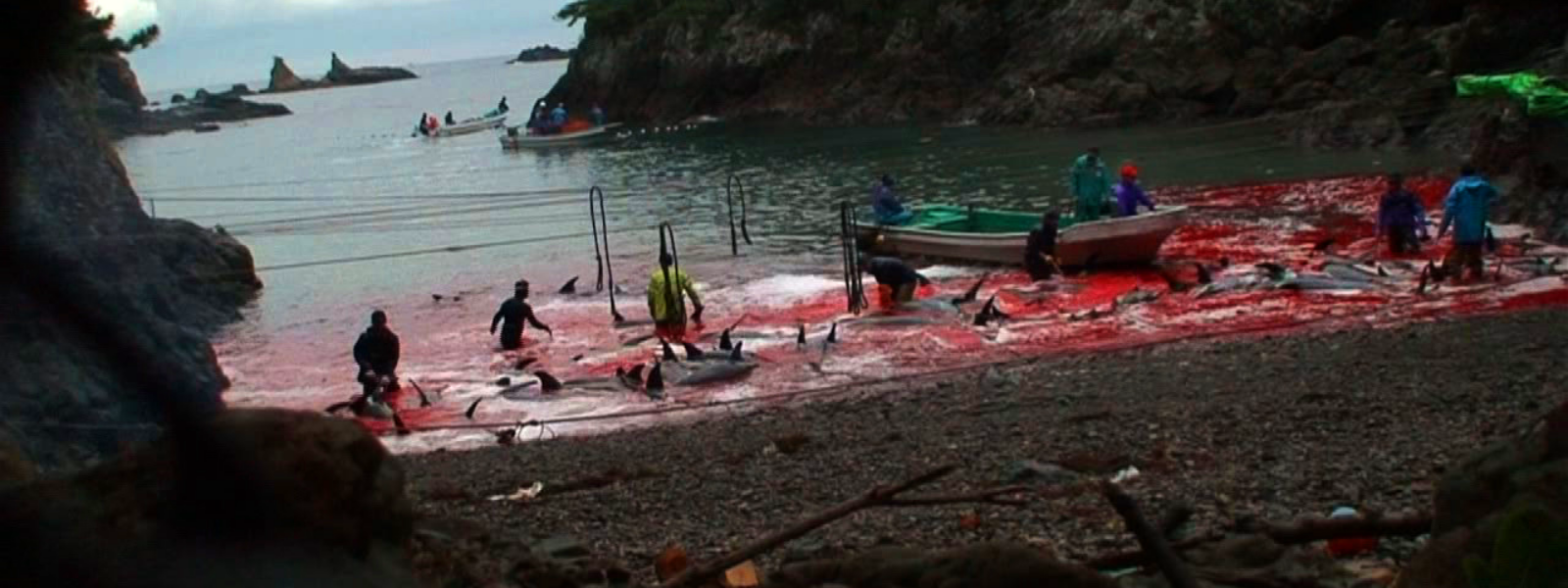

Apparently, the annual 6 months-long slaughter of dolphins of seven different species isn’t enough blood for the town of Taiji. The town is now asking the national Japan Fisheries Agency for new quotas for two more species, according to the Yomiuri news service.
Currently, the seven species that Taiji town is allowed to kill includes:
Bottlenose dolphin, which is showing signs of depletion, with lower capture rates than in past years – 469 were captured this past season, but none were killed for meat and 269 were released, after being held for picking out the best “show quality” individuals for a life in captivity;
Pacific white-sided dolphins, of which none were caught this past season;
Striped dolphin – 305 caught this past season;
Pantropical spotted dolphin – 170 caught, but again, none were killed and 135 were released, with the balance facing a short life in captivity;
Risso’s dolphin, with 259 caught, mostly slaughtered;
Short finned pilot whale – 59 caught, with 42 slaughtered; and
False killer whale, with none caught this past season.
(Thanks to CetaBase for these figures, and Sea Shepherd Conservation Society Cove Guardians for supplying the counts.)
The total quota for Taiji for all these species combined was 1,820 animals (each species also has its own quota), but only 1,282 dolphins were actually driven into the Cove this 2016-17 season, with 448 being released back into the ocean (and not counted against the quota, although it is likely that many of these died due to trauma and physiological stress).
Now, Taiji is asking the Japan government to provide them with new quotas for two new species: a quota of 46 rough toothed dolphins and 704 melon-headed whales (actually a large dolphin). Okinawa, which also supports a much smaller dolphin harpoon hunt, is apparently included in the request.
The hunters cannot fill their current quotas, and consumption of dolphin meat is in steep decline in Japan due to concerns about mercury poisoning, emphasized in educational work done by Earth Island’s International Marine Mammal Project and other organizations.
But Taiji is expected to use the at least some of the new dolphins to expand their species available for captivity, as they broker dolphins for aquariums around the world, particularly in Japan, China, Russia and the Middle East, where new aquariums for marine mammals are being built.
Needless to say, it will not take long for Taiji’s dolphin killers to deplete these new species to low levels as they have done with several species with an open season.
Photo: Oceanic Preservation Society